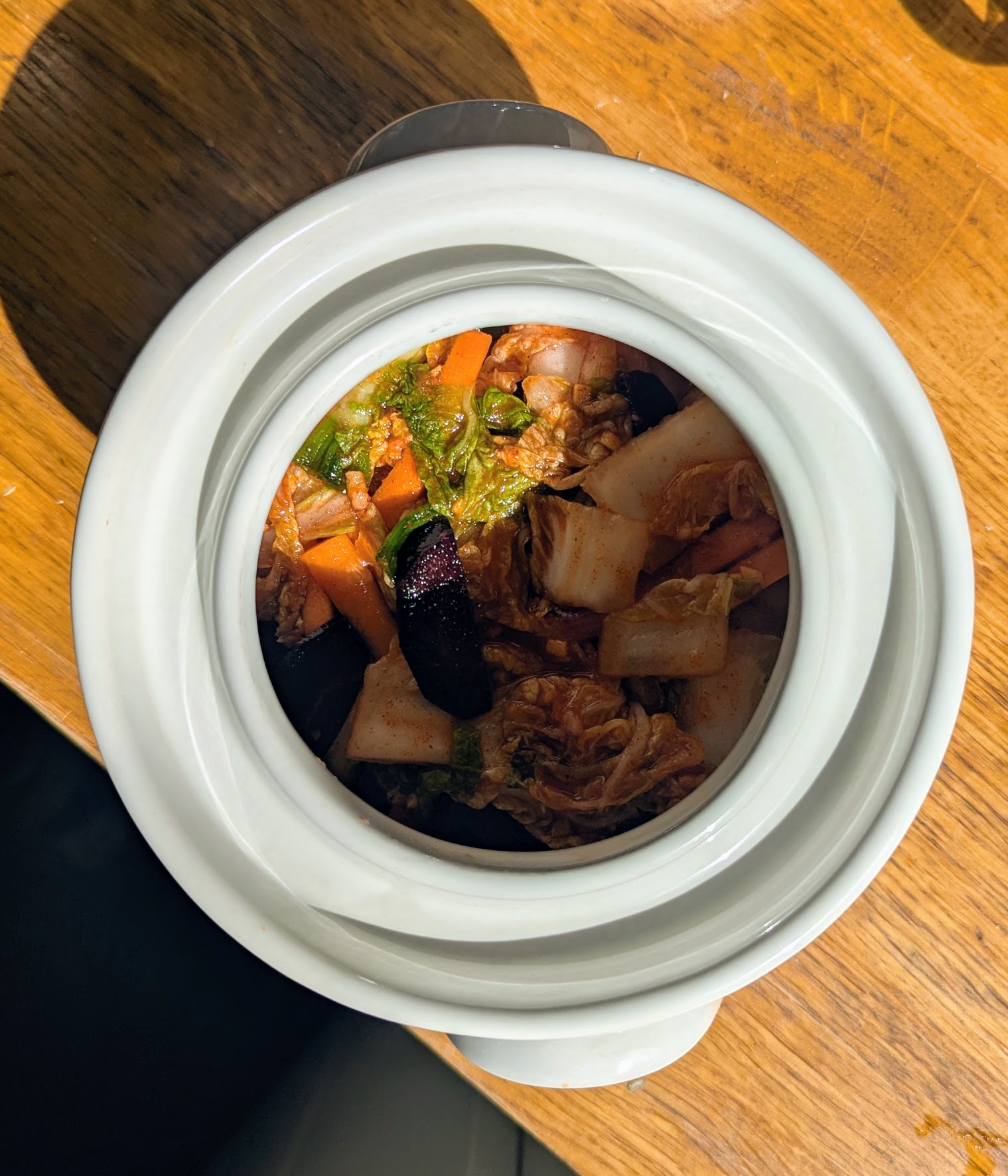2.5 % salt for the total vegetable weight is a good ratio for wild fermentation if you like your result on the salty side, otherwise aim for 2% (I learned this from Fairment).
- 1 kg Chinese cabbage (Chinakohl)
- 300 g Carrots (Möhren)
- 300 g Radish (Rettich)
- 40 g See salt (Meersalz) without additives
Chop vegetables to taste, mix with salt in a bowl and rest covered for 2 hours. The salt will break the cellular structure of the vegetables and juice will accumulate in the bowl.
- 2 Tbsps Rice flour (Klebreismehl)
Pour 200 ml from the vegetable liquid in the bowl into a small pot. Mix in rice flour, bring to boil and then cook gently until translucent (glasig). Leave to cool down a bit.
- 6 garlic cloves (Knoblauchzehen), chopped very small or pressed
- 3 Ginger pieces, approx. size of a walnut (walnussgroße Ingwerstücke), chopped very small
- 3 Tbsps Gochugaru (to me this is essential, but you can substitute with ordinary Chili spice)
- 2 Tbsps Fish sauce
- 100 g Sugar
Add residual ingredients to the pot and blend to taste, if garlic and ginger are too coarse. Add content to the bowl with the vegetables and mix thoroughly. Fill jars to 2/3 volume with the raw Kimchi and add a glass or stone weight, if available. I leave the lid loose on the jar, but use fermentation gear with proper pressure release valves or water channel, if at hand.

Leave for approximately 2 days in the kitchen, until the typical smell develops (that’s my indicator that the wild fermentation is working). Then, store in basement or fridge for at least a week before sampling. Usually, I consider the Kimchi ready after two weeks. It takes another 4 weeks to finish it. If not and the Kimchi becomes too wobbly, I use it for my weekly Kimchi Udon (kudos to Jonas Cramby) until it’s gone.

Parts of the recipe are based on an instruction leaflet from Steinzeug Schmitt.

